CUL of Duty

Roots are the anchors of plants. They burrow through the ground to gather water and inorganic nutrients, grabbing and wedging through the soil for permanent stability.
When it comes to removing or managing sturdy root structures on a construction or landscape site, a root cutter attachment may be the ideal tool for working around these tough organic pillars.
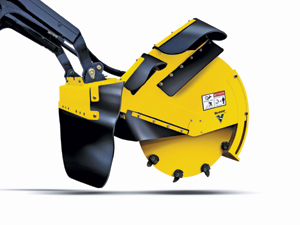 In the past, when contractors and landscapers came into contact with tree or plant roots on projects, their options were limited in how to effectively cut through the roots without causing extensive damage to the root structure of surrounding trees and plants. A root cutter for a compact utility loader is a unique attachment, similar to a large circular saw. A series of teeth are mounted to a rotating wheel. As the wheel rotates, the teeth cleanly cut through dirt and the root structure. The attachment can cut roots up to a maximum depth of 14 in. — the depth required by many municipalities. The width of the cut depends on the type of cutting teeth, which vary in width from 2.5 to 3.5 in. wide.
In the past, when contractors and landscapers came into contact with tree or plant roots on projects, their options were limited in how to effectively cut through the roots without causing extensive damage to the root structure of surrounding trees and plants. A root cutter for a compact utility loader is a unique attachment, similar to a large circular saw. A series of teeth are mounted to a rotating wheel. As the wheel rotates, the teeth cleanly cut through dirt and the root structure. The attachment can cut roots up to a maximum depth of 14 in. — the depth required by many municipalities. The width of the cut depends on the type of cutting teeth, which vary in width from 2.5 to 3.5 in. wide.
When the root cutter attachment is used properly, it will help protect the existing infrastructure and enhance the survivability of a tree, says Jon Kuyers, utility product segment manager with Vermeer Corp.
“Cutting root systems with a trencher or vibratory plow attachment tends to tear the roots,” he says. “This increases the chances for additional tree damage unless you cut the roots cleanly.”
In many cases, trees are planted too close to sidewalks — and certain types of trees have a shallow root system that seeks water wherever it may lie. This can lead to root invasion, causing the sidewalk to heave. Root cutters can be used in a maintenance role to cleanly cut the roots along sidewalks, helping to prevent heaving situations.
Kuyers recommends that contractors and landscapers look for a unit that properly shields the cutting wheel. The cutting wheel rotates at a high speed and the shield will deflect the dirt, roots and rocks that may be along the cutting path. Another key feature is a dirt exhaust chute. The chute helps direct dirt out to the side of the cutting wheel, allowing a barrier product to be placed in the trench to prevent further root infiltration. Typically, the root cutter attachment will require 13 gpm of hydraulic flow, at a rate that matches most compact utility loaders on the market.
Determining whether a root cutter is a wise investment for your business depends on the amount of construction work in your area. Municipalities are a large market for this attachment, as they routinely are widening streets and intersections to accommodate traffic flow. In addition, a number of municipalities will use the attachment to cut root systems along new and existing sewer lines, helping to prevent future infiltration. Your geography can also determine if the root cutter is a wise investment. Areas like California, for example, may see more rapid growth of shallow root masses than the Midwest. Golf courses routinely use the attachment to control surface root expansion on the course and to maintain and protect cart paths. Many tree farms and nurseries use the attachment to control tree root zones to ensure better success when transplanting a tree in the future.
Customers can anticipate investing between $5,700 and $6,000 on a root cutter attachment, including the cutter setup.
Greg Ehm is a technical writer for Two Rivers Marketing, based in Des Moines, Iowa.

Give your bucket a set of jaws and it can do twice as much work. The clamshell design of a combination bucket adds even more versatility to a compact utility loader, the ultimate in tool-carrier technology, by adding a metal mouth that opens, closes and bites. The combination bucket itself acts like a standard bucket then doubles as a dozer and as a grapple.
When used as a bucket, the combination bucket digs, carries, loads and dumps material. However, the combination bucket differs from an ordinary bucket when it comes to dumping material. The combination bucket’s clamshell design can open, releasing the material without having to tip the bucket, which means that material can be dumped with accuracy.
“Dumping by opening the clamshell is a useful feature when working with these machines,” says Greg Rostberg, marketing manager for Bobcat Co. “Compact utility loaders have shorter dumping heights than other compact loaders, and the extra room provided by the combination bucket gives the loader a little more room to dump.”
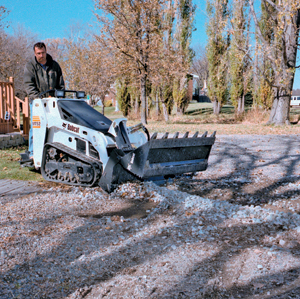
The clamshell also makes it possible to use the combination bucket as a grapple — grabbing broken concrete, brush or other hard-to-handle materials. Often, contractors encounter jobsites where all of these tasks are performed. A landscaper may need to move mulch or dirt to an area — a traditional bucket task. Then, the landscaper can spread the material by opening the combination bucket to doze or level. Finally, the landscaper can place decorative objects, such as rocks, by using the combination bucket as a grapple.
On a construction project at a residence, a contractor may need to replace concrete. After using a hydraulic breaker, the old concrete is removed by using the combination bucket as a grapple. If there is a problem with the sub-base, the problem can be fixed by grading and leveling the area by using the combination bucket as a dozer and as a traditional bucket.
“With the combination bucket, there’s no need to change attachments to do different tasks,” says Rostberg.
Combination Buckets and CULs
When a combination bucket is used on a compact utility loader, it is a valuable and efficient team. While the combination bucket provides the benefit of doing many tasks, the compact utility loader has been growing in popularity because the machine mechanizes work in areas that larger equipment can’t access. This work used to be done by hand.
In residential areas, many houses are close together, and other equipment is too big to reach the area where the work will be done. The compact utility loader is often the only machine that can fit through these narrow passageways. If the machine has tracks, it doesn’t damage turf when getting to the jobsite, a concern among many contractors because damaged turf needs to be repaired.
“A compact utility loader makes a business more productive,” says Rostberg. “Instead of dedicating five crew members to one job to do work by hand, a three-person crew with a mini track loader can be at one job and a two-person crew can be at a second job.”
That’s what combination buckets and compact utility loaders are all about — doing more work with one tool. When a machine and an attachment can save a contractor on labor, productivity and profits increase, which is a winning combination for any business owner.
Eric Morse is a technical writer and public relations manager for Two Rivers Marketing, based in Des Moines, Iowa.

To pick and place awkward and heavy material on the job (from demolition debris to trunks of trees), a contractor needs the dexterity of a mechanical hand fitted with iron fingers. When it comes to accomplishing such nimble and arduous tasks, a compact utility loader makes a great machine for digging, hauling, planting and building. Attach this tool carrier with a grapple rake and give landscape contractors, arborists and construction crews an iron appendage to grab material, lift it securely and place it with accuracy and safety.
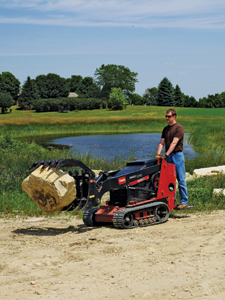
Combined with a stump grinder, bucket, tree forks and leveler attachments, the grapple rake is an ideal tool for arborists and landscapers completing tree care removal and restoration projects. Some common applications for the grapple rake attachment in these markets include gathering and moving piles of brush, cleaning up storm debris, breaking up and removing construction materials, as well as stacking rocks and timber.
Construction crews will pair this attachment with bucket, breaker and broom attachments for construction and demolition applications, especially in confined spaces. This process will eliminate the number of people needed to complete this kind of work. An operator and a compact utility loader outfitted with a breaker attachment can pulverize concrete in no time. In less than five minutes, the operator can then switch out for a grapple attachment to dig up, crush and haul debris and concrete. Once the bulk of the removal is done, a bucket or broom can finish the cleanup.
Compact utility loader owners in the market for a grapple rake should look for a unit designed with two heavy-duty cylinders and clamping force up to approximately 3,000 lbs. They should also ensure that the tines are made from AR400 steel, which is four times harder than regular steel. These standards will maximize the performance and the life of the attachment and the machine.
Grapple rake attachments are designed to be easy to operate, offering a clear line of sight for the operator and exceptional mobility around the project site. Its compact design allows operators to fit through gates and narrow access openings to pick up materials. Most units are around 35 to 44 in. wide, approximately 270 to 350 lbs and have a price range of $2,500 to $3,000.
Greg Lawrence is marketing product manager for the Toro Dingo compact utility loader product line, based in Bloomington, Minn.

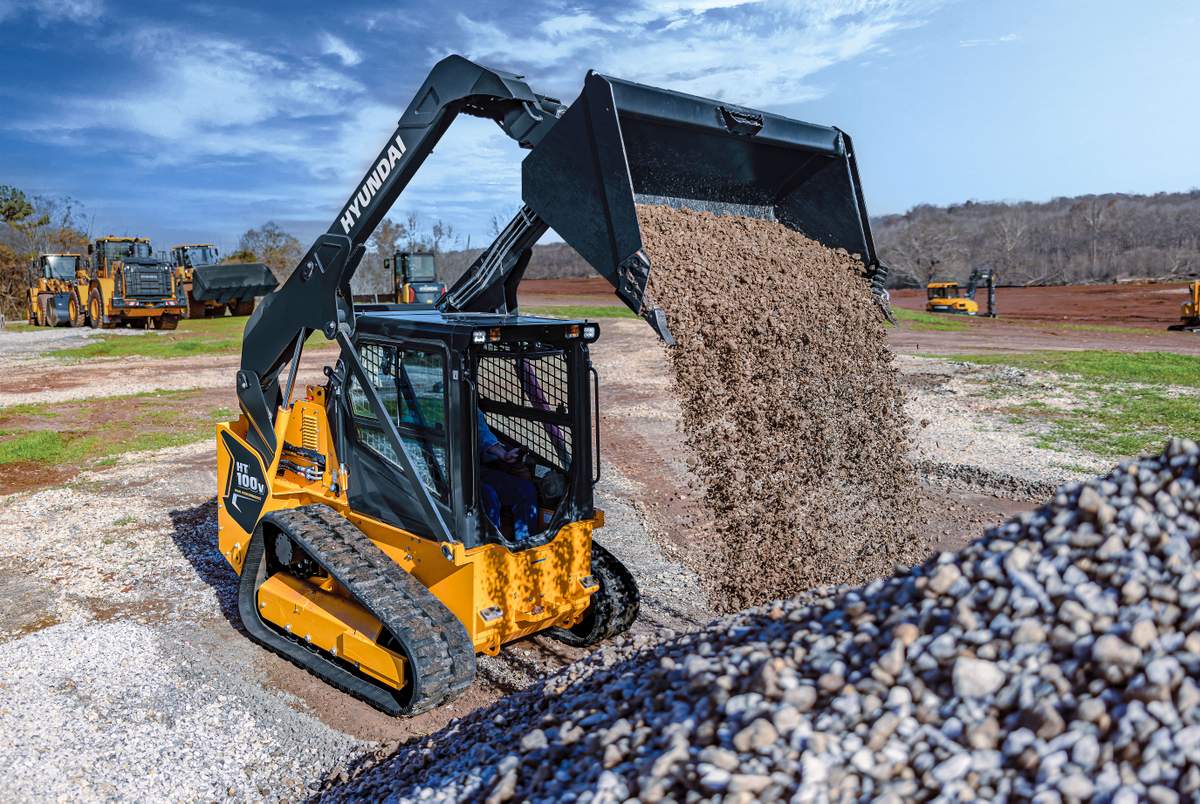


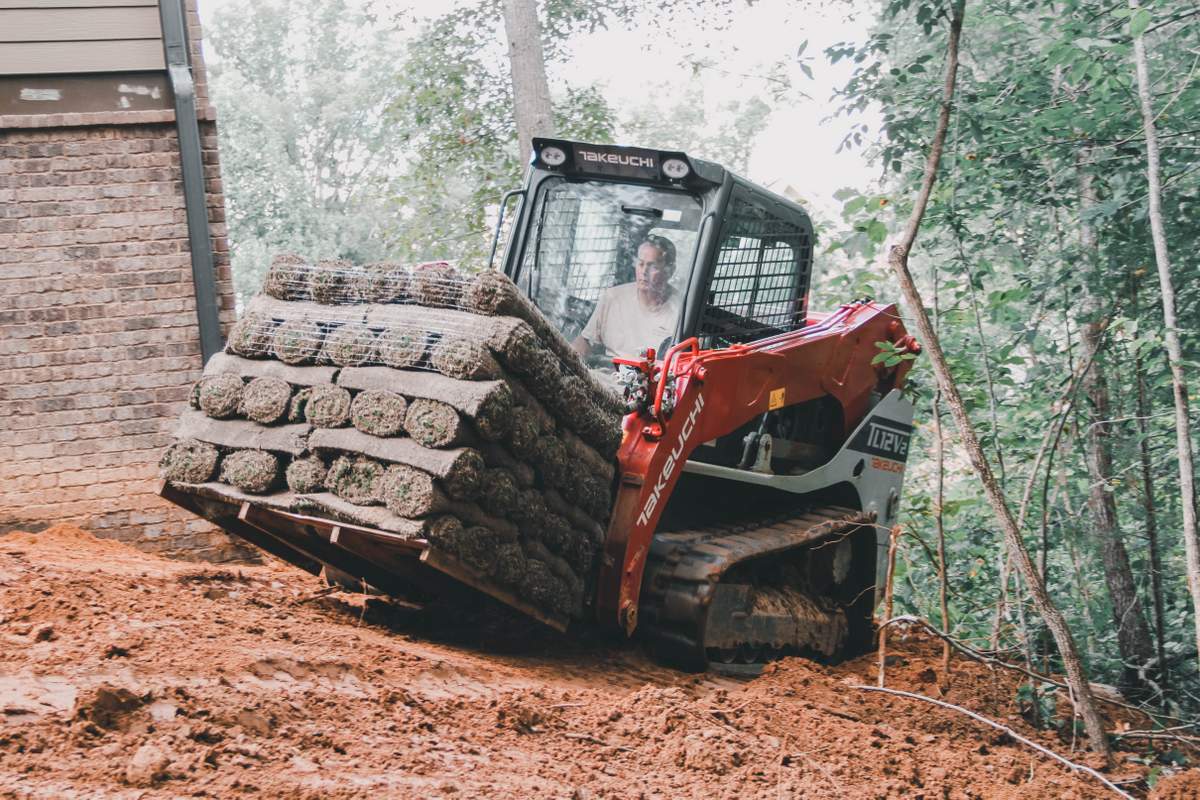
Comments are closed here.